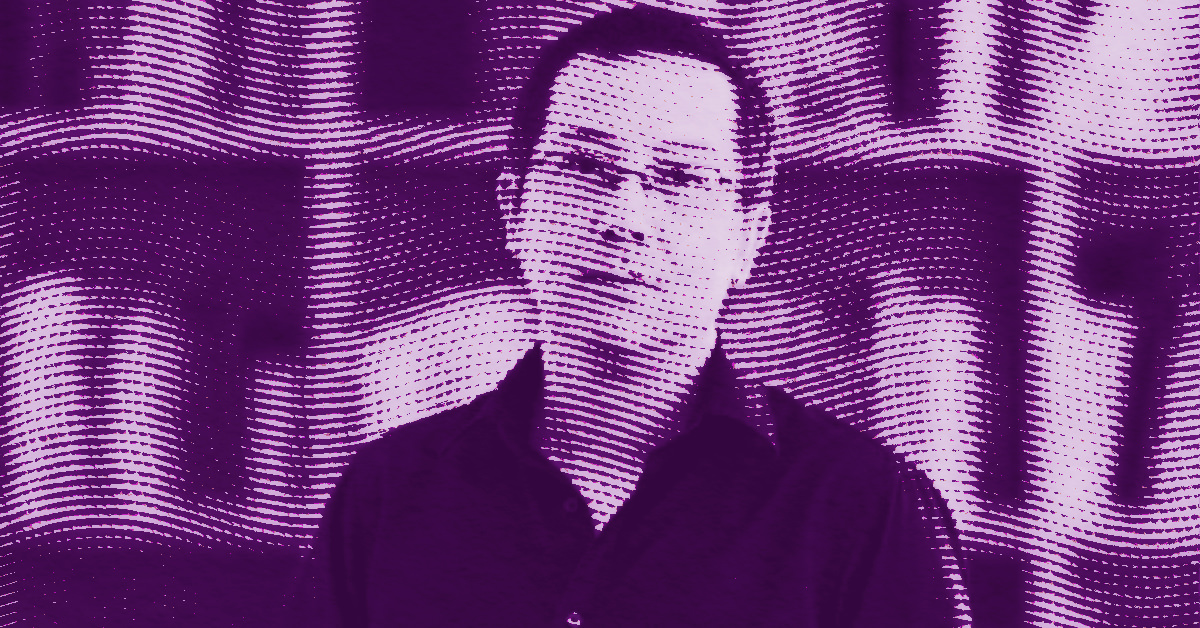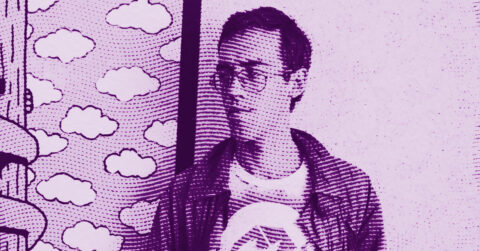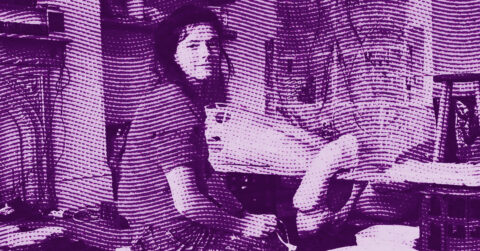Listen to me carefully, you bunch of snobs. Li Jikai does not belong to the category of Chinese artists who merely recycle Western codes to please Western collectors. No, this painter born in 1975 in Chengdu operates a far subtler synthesis, drawing from the twists and turns of individual experience to reveal the contradictions of an era. A graduate of the Sichuan Academy of Fine Arts in 2004, Li Jikai establishes himself as one of the most singular voices of what is called the “generation of the ego,” this cohort of post-1970s artists who grew up in economically transforming China.
Li Jikai’s pictorial universe unfolds around a recurring iconography bordering on obsession: children with cherubic features, disproportionate limbs, move through desolate landscapes between urban ruins and melancholic countryside. These androgynous figures, looking like abandoned toys, carry within them all the emotional charge of a generation caught between two worlds. Critic Zhu Qi speaks of them as a “mini-pain” [1], this particular suffering born from material prosperity and the existential void it engenders.
Kafka’s legacy in contemporary Chinese painting
The literary dimension that permeates Li Jikai’s work finds a particularly striking echo in the universe of Franz Kafka. Like the characters in The Prague Writer, Li Jikai’s protagonists evolve in a world where usual logic seems suspended. In “Yangzi” and “Nighttime Yangzi” (2006), a head floating on the river’s waters strangely recalls Kafka’s grotesque metamorphoses. This proximity is not accidental: it reveals a common approach to modern alienation, where the individual becomes a stranger to himself.
The influence of Franz Kafka [2] on the post-1970 generation in China goes far beyond literature to infiltrate visual arts. Li Jikai, without ever explicitly citing the author of The Metamorphosis, transposes the aesthetics of the absurd into his compositions. The “拾荒者” (scavengers) from his eponymous 2014 series evolve in an urban no man’s land evoking Kafka’s administrative wastelands. These characters, neither children nor adults, embody this intermediate condition so characteristic of Kafka’s work: being without ever fully managing to be.
Li Jikai’s pictorial technique amplifies this Kafkaesque dimension. His paint drips, inherited from the “po mo” (splashed ink) tradition, create a permanent blur effect that keeps the viewer in uncertainty. Nothing is ever definitively fixed in these works, reflecting Kafkaesque situations where the rules of the game constantly change. This visual instability expresses the metaphysical anguish of a generation confronted with the acceleration of History.
The pictorial space in Li Jikai’s work operates according to a dreamlike logic reminiscent of the impossible architectures of the Castle. His characters always seem to be in transit, never truly settled anywhere. In “Child” (2006), the drips escaping from the child’s eyes like tears reveal this same powerlessness in the face of a world that has become incomprehensible. This aesthetic of wandering finds its origin in the collective experience of a China in perpetual mutation, where traditional landmarks fade without new certainties emerging.
Li Jikai also draws from the Kafkaesque heritage this ability to transform the everyday into an extraordinary event. His “mini-pains” do not arise from spectacular traumas but from the accumulation of insignificant details which, gradually, reveal their oppressive weight. The one-child policy, internal migrations, relentless urbanization: these are all phenomena which, taken separately, may seem trivial but which together radically redefine the contemporary Chinese experience.
The architecture of melancholy
Li Jikai’s work maintains a constant dialogue with architecture, not that of glorious monuments but the anonymous and oppressive architecture of Chinese modernity. His urban landscapes, punctuated by concrete towers and factory chimneys, evoke the research carried out by the Bauhaus on modern housing. Walter Gropius [3] and his disciples had dreamed of a functional architecture that would liberate man from his secular alienations. Li Jikai shows us the reverse of this utopia: dehumanized spaces where the individual becomes a mere statistical element.
This architectural critique takes on a particular dimension in the Chinese context. Accelerated urban transformations have created environments where the human scale disappears in favor of economic logic. Li Jikai documents this mutation with the precision of a sociologist and the sensibility of a poet. His “Lonely planet” (2009) represent upside-down globes, a striking metaphor of a world that has become unreadable.
The influence of the Bauhaus movement on Li Jikai is not limited to social critique. It also feeds into his conception of pictorial space. Just as the German architects sought the purification of forms, Li Jikai works by subtraction, gradually eliminating all decorative elements to retain only the emotional essence. This economy of means, inherited from the theories of Mies van der Rohe, allows the artist to concentrate attention on the psychological state of his characters.
The geometry of the Bauhaus finds an unexpected echo in Li Jikai’s compositions. His spaces, often organized around simple vanishing lines, create a constant tension between order and chaos. The cubes and parallelepipeds that punctuate his landscapes are never neutral: they become markers of a modernity that crushes the individual. This critical appropriation of the modern architectural vocabulary reveals Li Jikai’s lucidity in the face of the unkept promises of modernization.
Contemporary housing, as represented by Li Jikai, no longer protects: it isolates. His interiors, rare but significant, evoke Le Corbusier’s “machines for living in” emptied of their human substance. The artist does not seek architectural beauty but sociological truth. His buildings reflect the state of mind of a society in transition, where the old world has disappeared without a truly new one emerging.
This architectural approach to pictorial space allows Li Jikai to go beyond simple representation to reach an almost theatrical dimension. His characters evolve on stages whose geometry reveals the power relationships. Architecture thus becomes a language, a system of signs that complements and amplifies the artist’s discourse on the contemporary condition.
Transitional spaces occupy a special place in this emotional geography. Bridges, thresholds, passages: Li Jikai multiplies metaphors of state change. These liminal places, dear to modern architecture, become for him the theaters of existential anguish. They embody this intermediate condition of a generation that no longer quite knows where it is going but knows it can no longer go back.
The poetics of lost childhood
At the heart of Li Jikai’s universe reigns a particular nostalgia, that of a childhood that never really existed but whose loss nevertheless haunts adulthood. This melancholy finds a disturbing echo in the artist’s own poetics, who often accompanies his exhibitions with texts of a confessional tone. In his “Sleeping Farmer and Wheat Waves” [4], he writes: “Childhood is now very far away, but it seems that I still remember certain things.”
This search for lost time does not stem from simple sentimentality. On the contrary, it reveals a keen awareness of the ruptures that have marked recent Chinese history. Li Jikai’s generation grew up in a China where traditional lifestyles were disappearing at a dizzying speed. His childlike characters embody what was sacrificed on the altar of modernization: innocence, family continuity, territorial rooting.
Childish iconography in Li Jikai’s work goes beyond mere representation: it constitutes a true symbolic system. His “children” with disproportionate bodies evoke those traditional Chinese dolls whose exaggerated forms aimed to ward off evil. This apotropaic dimension of Chinese folk art finds a contemporary resonance in Li Jikai’s work: his figures protect less against misfortune than they bear witness to its reality.
Li Jikai’s pictorial technique reinforces this poetic dimension. His drips, which sometimes evoke tears, sometimes sap, create an effect of emotional materiality. The painting literally becomes sensitive, like these characters who seem perpetually on the verge of emotion. This pictorial hypersensitivity reflects the state of a generation that never learned indifference.
Childhood objects occupy a special place in this poetics. Broken toys, too-small clothes, picture books: Li Jikai accumulates traces of a bygone world. These still lifes of childhood function as contemporary memento mori, reminding us that growing up also means accepting to renounce what we once were. In a society that has made eternal youth a commercial imperative, this melancholy takes on a subversive dimension.
The space of childhood in Li Jikai’s work is characterized by its instability. Vacant lots, abandoned construction sites, urban wastelands: his young characters evolve in precarious environments that reflect their own existential fragility. This geography of abandonment reveals the human costs of Chinese transformation. Behind the economic miracle lie sacrificed generations, condemned to grow up in urgency and uncertainty.
The evolution of a pictorial language
The art of Li Jikai cannot be understood without an analysis of its stylistic evolution, which reveals an artistic journey of remarkable coherence. From his early works influenced by German expressionism to his recent creations dominated by mixed media techniques, the artist has continuously refined his pictorial language to better grasp his favorite subject: the contemporary individual facing his own vulnerability.
The period 2005-2010 marks the emergence of what could be called the “Li Jikai style.” The works from this era, characterized by a muted palette dominated by grays and ochres, reveal the influence of Co Westerik, the Dutch painter master of contemplative hyperrealism. Like his European counterpart, Li Jikai develops an aesthetic of concentration, where every detail matters and silence becomes almost audible.
This stylistic evolution accompanies thematic maturation. Li Jikai’s early works, still marked by a cartoon aesthetic, gradually give way to more complex compositions where the social dimension becomes explicit. The exhibition “Sleeping Farmer and Wheat Waves” (2016) constitutes a turning point in this evolution: the artist definitively abandons references to pop culture to embrace a more openly melancholic vein.
The influence of the Chinese pictorial tradition also becomes more evident in recent works. The “po mo” technique, this tradition of splattered ink dating back to the Tang dynasty, finds a contemporary application with Li Jikai. His drips no longer result from controlled accidents but from a true expressive grammar that visually translates the states of mind of his characters.
This hybridization between Eastern and Western techniques reveals the sophistication of Li Jikai’s approach. Far from settling for a simple decorative syncretism, the artist develops a pictorial language drawing from both traditions to create something unprecedented. This stylistic synthesis reflects the experience of a generation torn between cultural heritage and globalized modernity.
The question of scale constitutes another essential aspect of Li Jikai’s evolution. His recent works, often monumental, reveal a new ambition: to create immersive environments that physically encompass the viewer. This shift towards installation art reveals the influence of international contemporary art while maintaining the specificity of the Chinese approach.
It must be acknowledged that Li Jikai has developed an artistic language that, without ever falling into the picturesque or exoticism, manages to translate the specifically Chinese experience of modernity. His works function as emotional seismographs, recording the tremors of a society in mutation. In a contemporary art world often dominated by trends, Li Jikai asserts a singular voice drawing its strength from careful observation of reality and exemplary technical mastery.
This artistic trajectory reveals an artist who has resisted the sirens of the market to develop an authentic quest. At a time when contemporary Chinese art arouses the enthusiasm of Western collectors, Li Jikai reminds us that true creation always arises from inner necessity and not external demands. His work constitutes a valuable testimony on a transitional era whose historical significance we are only beginning to measure.
In this perpetually effervescent Chinese artistic landscape, Li Jikai occupies a particular position: that of a clear-sighted observer who refuses both complacency and easy denunciation. His works remind us that true art always arises from the tension between individual experience and the collective forces that shape it. In this, Li Jikai asserts himself as one of the most insightful witnesses of his era, an artist whose work will undoubtedly continue to question our relationship with modernity and its disillusions for a long time to come.
- Zhu Qi, “Art of post-’70s exhibition”, Shanghai and Beijing, 2005
- Franz Kafka, The Metamorphosis (1915), documented influence on the post-1970 Chinese generation
- Walter Gropius, Bauhaus Manifesto (1919), Bauhaus School Weimar-Dessau
- Li Jikai, autobiographical text, exhibition “睡着的农夫与麦浪”, Hubei Museum of Fine Arts, 2016
















